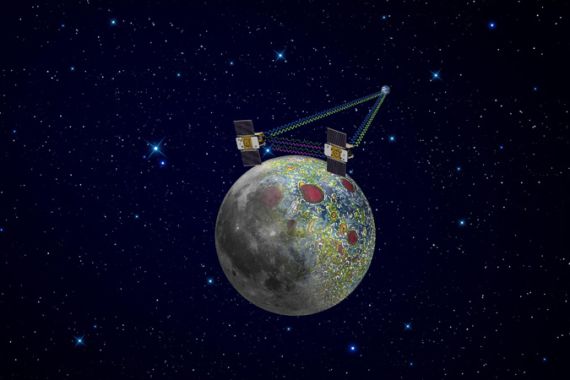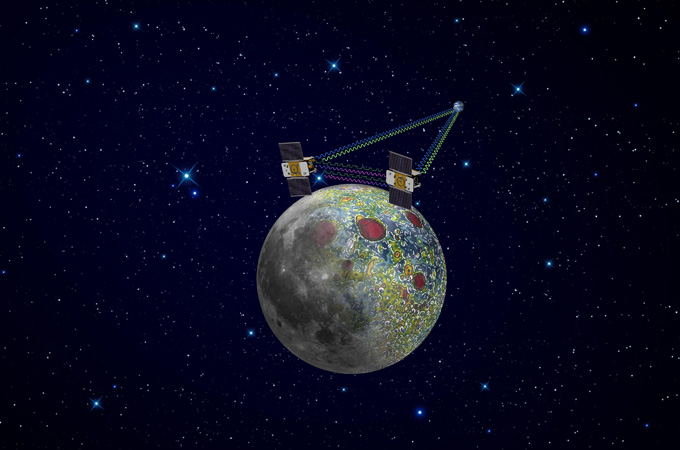Second NASA probe enters lunar orbit
The second of twin Grail satellites to study the moon in unprecedented detail enters lunar orbit.

 |
| Grail is expected to help researchers better understand why the moon is asymmetrical and how it formed [AFP] |
The second of two NASA spacecraft has entered orbit around the moon, giving the space agency a double success as 2012 got underway.
Grail-B began its first orbit at 2344 GMT on Sunday, following its sister craft, Grail-A, which entered orbit a day earlier in a new mission to unveil the moon’s inner secrets.
Keep reading
list of 4 itemsHong Kong’s first monkey virus case – what do we know about the B virus?
Why will low birthrate in Europe trigger ‘Staggering social change’?
The Max Planck Society must end its unconditional support for Israel
A NASA spacecraft has flown over the moon’s south pole, fired its engine and slipped into orbit in the first of two back-to-back mission to unveil the moon’s inner secrets.
“Cheers in JPL mission control as everything is looking good for GRAIL-B,” NASA’s Jet Propulsion Laboratory tweeted after the craft orbit burn was completed. “It’s going to be a great 2012!!”
The Grail probes, short for Gravity Recovery and Interior Laboratory, have been cruising independently toward their destination since launching in September aboard the same rocket on a mission to measure lunar gravity.
Grail is the 110th mission to target the moon since the dawn of the Space Age including the six Apollo moon landings that put 12 astronauts on the surface.
Grail is expected to help researchers better understand why the moon is asymmetrical and how it formed by mapping the uneven lunar gravity field that will indicate what’s below the surface.
Understanding the moon
“It seems that the answer is not on the surface,” said chief scientist Maria Zuber of the Massachusetts Institute of Technology.
| In Video |
|
Al Jazeera’s Andy Gallacher reports on NASA mission |
“We think that the answer is locked in the interior.”
Previous lunar missions have attempted to study the moon’s gravity, which is about one-sixth Earth’s pull with mixed results.
Grail is the first mission devoted to this goal.
The near-identical Grail-A and Grail-B spacecraft will spend the next two months refining their positions until they are just 55 kilometres above the surface and flying in formation.
Data collection will begin in March.
Despite the latest focus on the moon, NASA will not be sending astronauts back anytime soon.
The Obama administration last year nixed a lunar return in favour of landing humans on an asteroid and eventually Mars.
A jaunt to the moon is usually speedy. It took the Apollo astronauts three days to zip there aboard the powerful Saturn V rocket.
Since NASA wanted to economise by launching on a small rocket, it took Grail a leisurely 3 1/2 months to make a roundabout trip.
NASA’s last moonshot occurred in 2009 with the launch of a pair of spacecraft, one that circled the moon and another that deliberately crashed into the surface and uncovered frozen water in one of the permanently shadowed lunar craters.